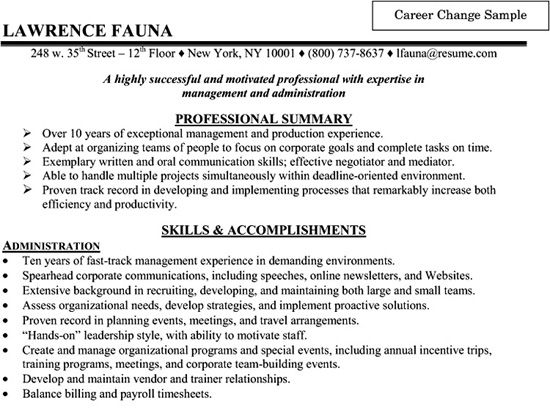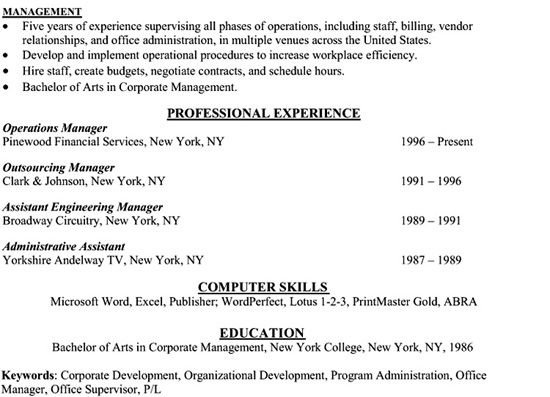The Resume.Com Guide to Writing Unbeatable Resumes (36 page)
Read The Resume.Com Guide to Writing Unbeatable Resumes Online
Authors: Warren Simons,Rose Curtis



Must-Have List for an Effective Job Search
Although a professional resume is the backbone of any successful job search, it is only one of many documents that must be sent to a prospective employer. Additional materials that are vital to the success of a job search include a custom-tailored cover letter, a follow-up letter for the job application, and a postinterview thank-you letter. A list of references often is required as well.
Beginning with the cover letter, this chapter will take you step-by-step through the process of creating and sending effective correspondence, including what information to include and exclude, why you shouldn’t send a cover letter as an attachment, and how to address special—and sometimes sensitive—topics such as work status, visas, salary requirements, and relocation.
A cover letter is your introduction to a potential employer. It should be concise and clearly written, and it has a single purpose: to persuade the hiring manager to pick up your resume. Your ability to market yourself effectively begins the instant a hiring manager reads your cover letter. Although there’s no distinct format that makes a cover letter a success, there are key points that should be followed to ensure that your application avoids the rejection pile.
An effective cover letter should target the position you’re applying for. A form letter in which only the company’s contact information changes is a mistake and should be avoided. A smart step is to include the name of company you are applying to in the body of the letter, not just in the “address to” section at the top. Even if it’s just in one sentence (“I am confident that my visual editing skills would be a great asset to Tralfama Films”), composing a cover letter that targets one company, not every company, is an important key. It also lets the employer know that you’re pursuing
this
position, not
any
position.
Here are some helpful guidelines to keep in mind in creating cover letters:
■
Keep the cover letter concise. Your letter should have up to four paragraphs of single-spaced 11- or 12-point type and should not exceed one page.
■
The header should appear at the top the page and should be identical to the header on your resume. Include your name, address, telephone numbers, and e-mail address.
■
Focus on including key accomplishments and skills that fit the position’s requirements. This is where you need to entice the reader to move to the resume.
■
Close your cover letter with a thank you. Most hiring managers are asked to do too much with too little; let them know that you appreciate their time and consideration.
■
Spell check your cover letter. Many hiring professionals will not review a resume if the cover letter has a typo in it. Have a friend or relative proofread it. Then read it again.
Although the cover letter won’t secure you a position, it’s a necessary step in the process. If done well, it can increase your chances of finding a great job exponentially.
The cover letter should explain who you are, what you have to offer the employer, why what you have to offer is valuable, and what you hope to gain from the position. Pay special attention to the job description of the position for which you are applying. Just as your resume needs to cover all the points discussed in the job description, your cover letter also should touch on those areas. Introduce your professional qualifications and address any special requirements the hirer has in mind for the perfect candidate, including certifications, years of experience, knowledge of particular procedures or applications, and educational degrees. If your letter doesn’t address the employer’s advertised needs, your resume may be rejected.
You should never discuss personal information such as age, nationality, and religion in a cover letter. The focus of the cover letter must be positive, and the tone should show why you would be an invaluable asset to a potential employer because of your specific talents and credentials.
The opening paragraph of an effective cover letter addresses the employer’s needs and wants and either identifies a need the employer has and shows
how you will fill that need or promises a benefit that you will bring to the employer.
This paragraph introduces you to a hirer and usually highlights your job title, years of experience, and
key selling points relevant to the position being sought
. To incorporate the most relevant skills and accomplishments, closely read the job description. Basically, you’re making a promise to fill the void the company currently has. How are you going to do this? A good tip is to touch on the things that you currently do or have done for a previous or current employer and how the skills you used for past successes will translate seamlessly to your new position. Additionally, you can focus on your greatest achievement, but basically this is the setup to keep the reader moving into the second paragraph.
Paragraph 1 Example
As a highly successful senior management professional with over nine years of experience in marketing and product development, I am confident that I would be an ideal candidate for the Marketing Manager position that Evergreen Industries currently has posted on the Careers page of the company Website. I have developed and implemented highly profitable marketing campaigns for a diverse range of products, and I feel that I would bring the same prosperity to your organization.
By focusing on key achievements, you immediately establish your value as well as your role as a strong manager capable of improving a company’s bottom line—clearly an asset to a company seeking a marketing manager.
The second paragraph provides the potential employer with a list of reasons why you will be able to fill the position’s needs and thrive at the company. Using your greatest skills, accomplishments, or education highlights, describe the abilities you currently have that would enable you to fill this position better than any other candidate could.
Areas to focus on include your responsibilities for a previous or current employer
and how those responsibilities translated to powerful results.
A great way to impress hirers is to describe how your assets profited an employer in terms of cost-cutting measures, increased productivity, greater revenues, additional clientele—basically, how and why you can meet the position’s needs and/or deliver a benefit.
Paragraph 2 Example
My background working with distributors, graphic artists, and consumer analysts to create and execute highly successful promotional campaigns has provided me with a broad knowledge of marketing strategies, and I have closely followed the launch of your new product, the XL 8799. Having served at numerous Fortune 100 companies in the telecommunications industry, I am able to thrive in fast-paced environments where working within tight time constraints is the norm. My keen business acumen, coupled with my proven record of success overseeing marketing operations, would allow me to thrive at Evergreen Industries.
You can use bullets in the cover letter to draw added attention to your key achievements. Bullets are a great way to personalize cover letters.
Paragraph 2 Bulleted Example
As you can see from the attached resume, my background working in the telecommunication industry is robust and is measured by one success after another. Some of the benefits that I will bring to your company include:
• Experience working with distributors, graphic artists, and consumer analysts to create and execute highly successful promotional campaign.
• Broad knowledge of marketing strategies.
• A background in Fortune 100 company environments and the ability to thrive in fast-paced atmospheres where tight time constraints are the norm.
• Keen business acumen coupled with a proven record of success overseeing marketing operations.
The third paragraph provides additional supporting details about your key abilities or can be used to cite additional benefits you have to offer. It also can reference your resume’s attachment (if mailed or faxed) or placement (if e-mailed). This is also the place to address any special circumstances regarding your application. This might include salary requirements, work samples or your portfolio, and your ability to work in the United States.
Start this paragraph with a strong closing statement such as “The accompanying resume provides an overview of my skills and accomplishments.” You now can address special issues such as
salary requirements.
Salary Requirements
Salary requirements are one of the most common kinds of information employers ask of job applicants. If you give a figure either above or below the hirer’s planned salary range, you probably will be eliminated from consideration. We recommend stating a flexible salary range that takes into account your background, the job title, the industry, and the company’s size. Many hirers will reject candidates with unrealistic requirements; don’t end up in the “rejected” pile by aiming too high or too low. The best way to avoid doing that is by remaining flexible: “Based on my background and expertise, my flexible salary requirements are $X to $X.”
Paragraph 3 Example
The accompanying resume provides an overview of my skills and accomplishments. While it represents a summary of my work history, I am confident that a face-to-face meeting will provide the best opportunity for me to learn more about your objectives and convey the many ways I can help you reach them.
The last paragraph states how you will follow up and thanks the hirer for his or her time; this should be a concise two- to three-line paragraph. You should
be the one to initiate the follow-up, saying, for example, “I’ll contact your office to see when we might be able to meet.” If the letter is to be used in response to ads, also indicate that you will follow up, designating a time frame in which you will do so (“I will e-mail you next week to arrange the possibility of a meeting.”).
Always try to follow up even if all the contact information is
not
listed in the job ad. For example, if you are responding to an ad by fax, send a follow-up fax letter a few days after you send your resume. The same rule holds true for e-mailed submissions and mailed resumes. We recommend always indicating in your cover letter that you will follow up. This demonstrates your interest, and your intent should be included in the last paragraph.
Being persistent in your job search is one key to success.
You should always close the cover letter by thanking the hirer for his or her consideration. A little courtesy from the job seeker can do wonders in creating a strong and lasting impression.
Paragraph 4 Example
I will contact your office next week to arrange a time when we might be able to speak by phone. I look forward to talking with you, and I thank you for your time and consideration.
Sincerely,
Lawrence Pearle
If you are mailing your cover letter, it should be printed on the same type of paper you use for your resume. If you are e-mailing your cover letter, paste it directly above your resume and insert both documents into the body of the e-mail. Use a solid line or a row of asterisks to differentiate the information. A hirer shouldn’t have to scan your e-mail closely to differentiate the information; remove all obstacles from the resume and cover letter. As we discussed in Chapter 8, never include your cover letter as an attachment to an e-mail, because it may be deleted automatically. Review the following cover letter samples for further ideas and ways to create powerful cover letters.